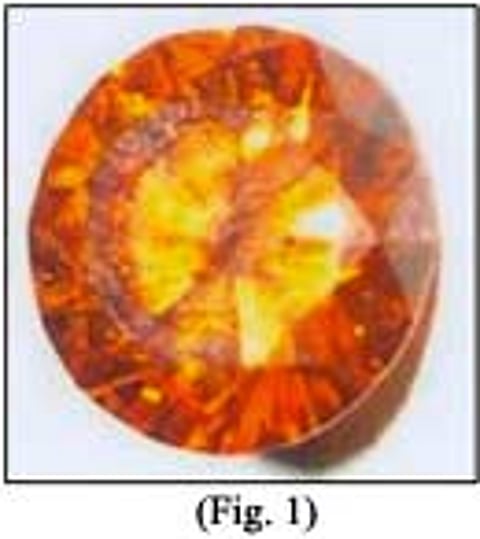

The Gemological Institute of India (GII) has succeeded in identifying that a 0.43 carat yellow colored diamond that was received by it for grading at its Diamond Grading Laboratory is a synthetic one (Fig. 1).
The GII, according to its Secretary K. T. Ramchandran, is now well-equipped to distinguish synthetic diamonds from their natural counter-parts.
GII first sent this diamond to its Research Laboratory for analysis of properties and for confirming the authenticity of the stone.
Technicians there were able to identify this diamond as a synthetic one by using the newly installed state-of-the-art equipment, including FTIR (Fourier Transform Red Spectrophotometre), Diamond View and Diamond Sure.
The DTC’s Diamond Sure indicated that the diamond should be referred for further tests. Subsequently the Diamond View exhibited the typical growth pattern and green flourence (Fig. 2).
The gemstone was then further examined under Thermo Nicolet 5700 FTIR filled with Continuum Microscope and Linkham Heating Cooling Stage. The FTIR indicated a peak of 1344 cm-1 which is indicative of Type 1B Synthetic Diamonds (Fig. 3).
The diamond was then examined under 60x magnification but it looked quite cloudy and included.
Synthetic diamonds which contain such clouds are attracted to a magnet even when no large flux particles are present.
Actually, this diamond seemed to be attracted to a spherical magnet and could be suspended in mid-air (Fig. 4). This suggested that the cloudy pin- points might be at least composed of iron, or iron-nickel flux.
The GII points out that none of the routine tests used for separating diamonds from simulants is useful in distinguishing synthetic diamonds. Even for any conventional gem testing laboratory, it is practically impossible to separate synthetics from their natural counterparts. Therefore, the most sophisticated instruments like FTIR, Laser Raman Spectrometre, Diamond View, Diamond Sure and UV/Vis/NIR Spectrometre are absolutely necessary to identify synthetic diamonds. This poses a challenge to the gems and jewellery industry as well as to most of the gems testing laboratories.
According to GII, diamond crystals produced synthetically are often more regular than the natural ones. Irregularities of natural crystals could e a due to constriction by surrounding rocks when they grew and lack of Carbon. Also, natural diamonds may have been partly dissolved after their original formation. Typical characteristics of synthetic diamonds include :
Follow DiamondWorld on Instagram: @diamondworldnet
Follow DiamondWorld on Twitter: @diamondworldnet
Follow DiamondWorld on Facebook: @diamondworldnet
